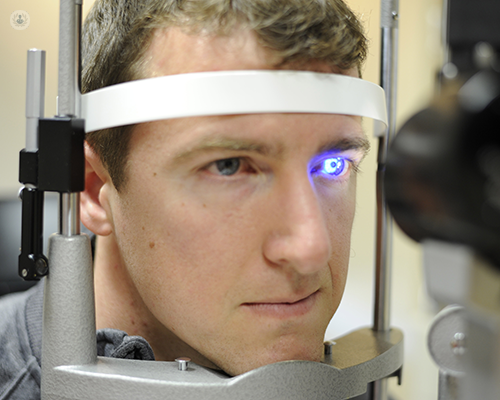What is angle-closure glaucoma?
Written by:Angle-closure glaucoma involves the iris blocking the drainage channels inside the eye. The condition is the result of a small, crowded eyeball. It includes acute angle closure (AAC- previously called acute glaucoma) which has a sudden onset, and chronic angle closure glaucoma, which occurs more slowly.

What are the causes of glaucoma?
People with angle-closure have eyes that are small and crowded inside. This crowding allows the drainage angle to ‘close’ and the eye pressure to rise, sometimes to very high levels. If it isn’t treated straight away, permanent damage frequently occurs.
Chronic angle-closure develops slowly, usually without symptoms, although the reason for the rise in pressure is similar. When damage to the nerve has occurred the term “glaucoma” is used.
Angle-closure glaucoma symptoms
Acute angle closure is typically very painful because of the high eye pressure. Symptoms include seeing halos around light sources, a red eye, cloudy vision and, sometimes, sickness. It must be treated straight away and with prompt, expert treatment, vision often recovers well.
Sometimes people experience a series of mild attacks with misty vision, coloured rings around lights and some discomfort. If you have these symptoms, you should consult an eye specialist without delay. Chronic angle closure develops without symptoms, and is only detectable on specialist eye testing.
What treatments are available?
Acute angle closure is initially treated with drops and an intravenous injection to lower the eye pressure. Once the pressure is lowered, a laser or surgical procedure is carried out in order to bypass the blockage in your eye’s drainage system and prevent a recurrence of the problem.
Normally the same procedure is also performed in the other eye, in order to prevent an attack of acute angle closure in that eye. These treatments are not painful and are usually carried out as an out-patient, although a short stay in hospital may occasionally be required.


